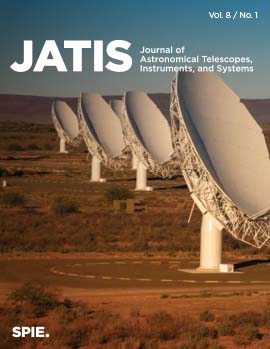Nichole Barry, Gianni Bernardi, Bradley Greig, Nicholas Kern, Florent Mertens
Journal of Astronomical Telescopes, Instruments, and Systems, Vol. 8, Issue 01, 011007, (November 2021) https://doi.org/10.1117/1.JATIS.8.1.011007
TOPICS: Calibration, Electromagnetic coupling, Instrument modeling, Data modeling, Galactic astronomy, Antennas, Hydrogen, Signal detection, Physics, Interferometers
The Square Kilometer Array (SKA) is a planned radio interferometer of unprecedented scale that will revolutionize low-frequency radio astronomy when completed. In particular, one of its core science drivers is the systematic mapping of the Cosmic Dawn and Epoch of Reionization, which mark the birth of the first stars and galaxies in the universe and their subsequent ionization of primordial intergalactic hydrogen, respectively. The SKA will offer the most sensitive view of these poorly understood epochs using the redshifted 21-cm hyperfine signal from intergalactic hydrogen. However, significant technical challenges stand in the way of realizing this scientific promise. These mainly involve the mitigation of systematics coming from astrophysical foregrounds, terrestrial radio interference, and the instrumental response. The Low Frequency Array, the Murchison Widefield Array, and the Hydrogen Epoch of Reionization Array are SKA pathfinder experiments that have developed a variety of strategies for addressing these challenges, each with unique characteristics that stem largely from their different instrumental designs. We outline these various directions, highlighting key differences and synergies, and discuss how these relate to the future of low-frequency intensity mapping with the SKA. We also briefly summarize the challenges associated with modeling the 21-cm signal and discuss the methodologies being proposed for inferring constraints on astrophysical models.



 Receive Email Alerts
Receive Email Alerts